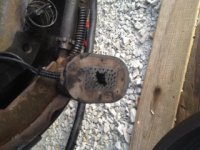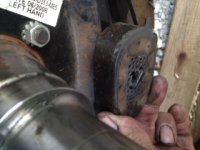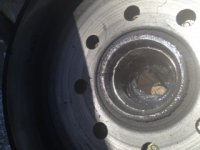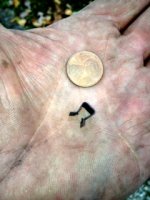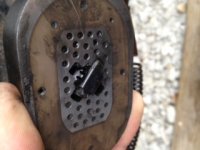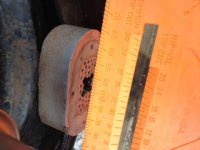chasdvorak
Well-known member
As part of the Illinois Rally, I asked for some help and we had a class on packing wheel bearings by hand (special thanks to Dave, Jon, Jan, Ken and the peanut gallery). We had a great time and I learned from some very experienced folks. Prior to this lesson, I pumped grease into the zerk fitting until I saw some backflow. Most people at the rally thought the zerk was a waste of time and a cause of potential problems due to blown seals....I now agree with that statement. We did a complete job on one wheel with the intention of completing the other 3 on my own time.
So today I decided it was high time to finish the job. As luck would have it, the wheel we did at the rally was actually in the best shape with little excess grease. As I worked on the other 3 wheels, I noticed gobs (if that is a word) of grease in the area between the inner and outer bearing. The last wheel turned into a real problem when I popped off the brake drum. To my surprise, the brake magnet fell off. The spring was present, but the retaining clip was missing. I had a flat piece of wood under the hub when I removed it and I was unable to locate the missing clip. Could it have been devoured by the braking action.. I did not see any signs of this on the pads or lining. I also had a ton of grease in the hub and a large amount penetrated the brakes. The attached picture shows some of the grease after I already removed a large amount. The back seal was tight, so I'm not sure how the grease got onto the brakes.
That said, I'd appreciate any info on how I lost that retaining clip and the best method for fixing it. Is this clip available locally or is it something that has to come from Lippert. Any suggestions would be greatly appreciated . As for the SupeLube hubs....I followed the instructions, spinning the wheel as I pumped and stopping when I saw the backflow. I won't be doing that again!!!
. As for the SupeLube hubs....I followed the instructions, spinning the wheel as I pumped and stopping when I saw the backflow. I won't be doing that again!!!
Here's some pictures of my problem child. Thanks in advance for the help.
So today I decided it was high time to finish the job. As luck would have it, the wheel we did at the rally was actually in the best shape with little excess grease. As I worked on the other 3 wheels, I noticed gobs (if that is a word) of grease in the area between the inner and outer bearing. The last wheel turned into a real problem when I popped off the brake drum. To my surprise, the brake magnet fell off. The spring was present, but the retaining clip was missing. I had a flat piece of wood under the hub when I removed it and I was unable to locate the missing clip. Could it have been devoured by the braking action.. I did not see any signs of this on the pads or lining. I also had a ton of grease in the hub and a large amount penetrated the brakes. The attached picture shows some of the grease after I already removed a large amount. The back seal was tight, so I'm not sure how the grease got onto the brakes.
That said, I'd appreciate any info on how I lost that retaining clip and the best method for fixing it. Is this clip available locally or is it something that has to come from Lippert. Any suggestions would be greatly appreciated
Here's some pictures of my problem child. Thanks in advance for the help.

